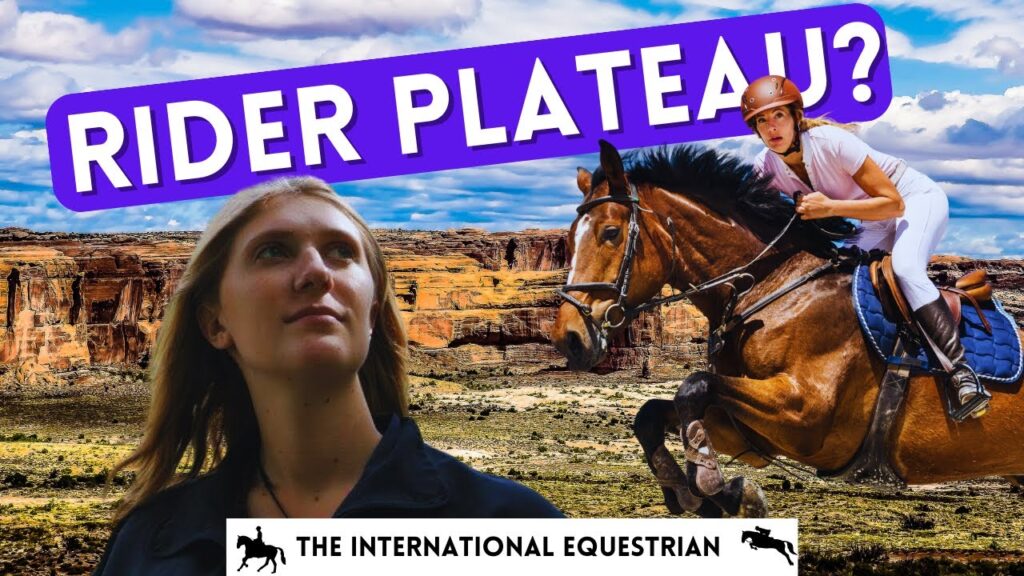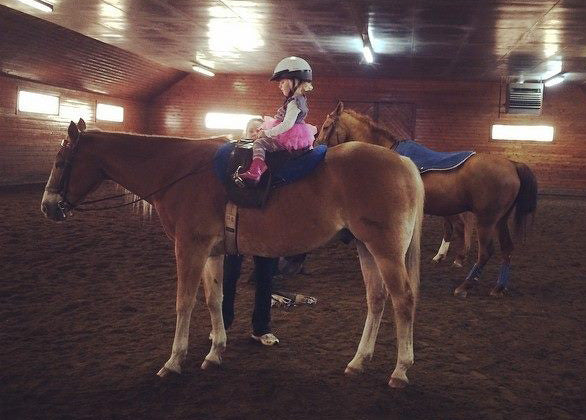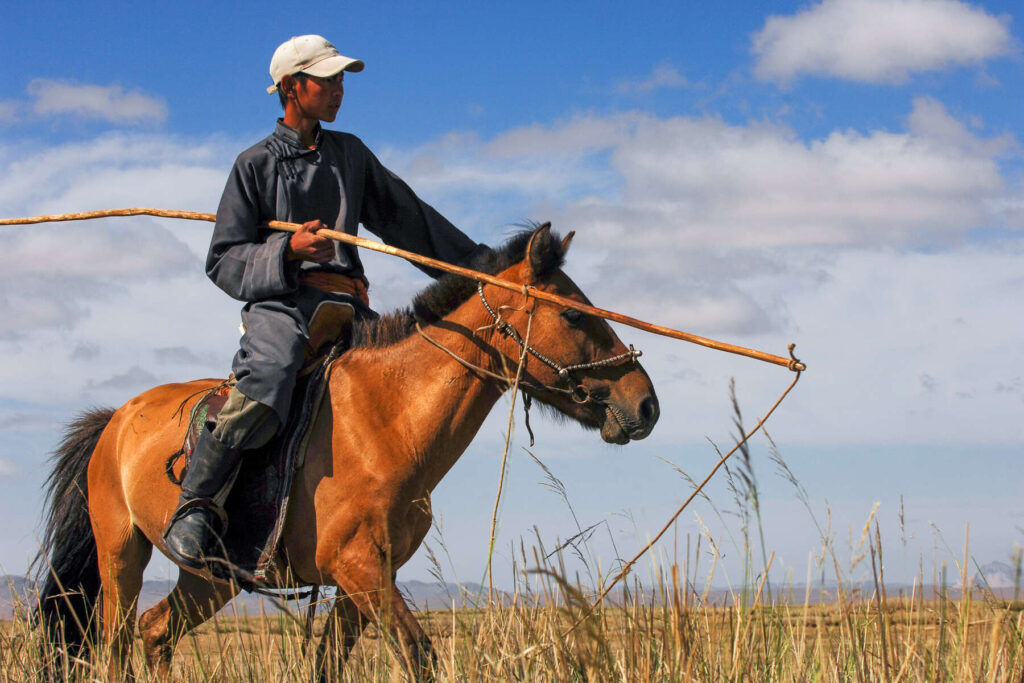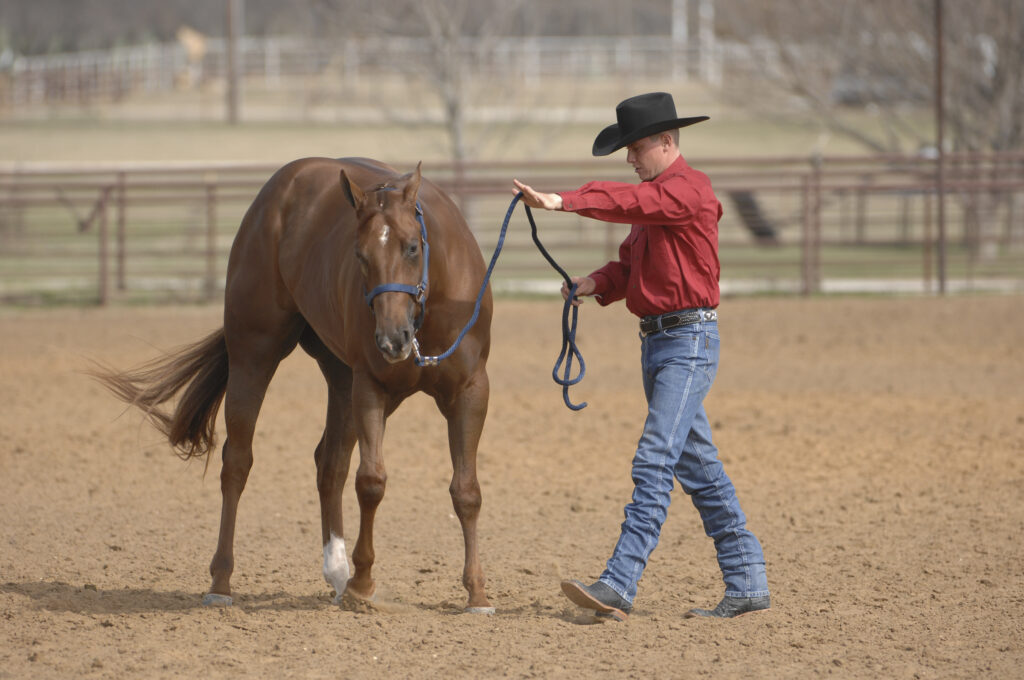Do you ever feel like you’ve hit a wall in your horseback riding progress? Like no matter what you do, you just can’t seem to improve? Well, don’t worry, because in this article, you’re going to learn all about how to overcome riding plateaus in horseback riding. Whether you’re a beginner or an experienced rider, we’ve got some tips and tricks that will help you break through that plateau and take your riding skills to the next level.
One of the keys to overcoming riding plateaus is to constantly challenge yourself and push your limits. It’s important to set goals for yourself and work towards them. Maybe you want to master a certain riding technique or improve your balance and coordination. Whatever it is, having a clear goal in mind can give you something to strive for and help you stay motivated. In addition, it’s important to mix things up and try new things. Take lessons from different instructors, try out different riding styles or disciplines, and participate in horseback riding clinics or workshops. By exposing yourself to new experiences, you can gain fresh perspectives and discover new ways to improve your riding. So, if you’re ready to overcome those pesky riding plateaus, keep reading because we’re going to dive even deeper into this topic in the article.
How to Overcome Riding Plateaus in Horseback Riding
Do you often find yourself feeling stuck in your horseback riding journey? Are you struggling to progress or feeling like you’ve hit a plateau? Don’t worry, you’re not alone. Many riders experience riding plateaus at various points in their equestrian journey. Understanding what causes these plateaus and how to overcome them can help you break through and continue to grow as a rider. In this article, we will explore the definition of riding plateaus, the potential causes, and provide practical solutions to help you overcome them.

Understanding Riding Plateaus
Definition of Riding Plateaus
Riding plateaus refer to periods of time where a rider experiences a lack of progress or improvement in their skills and performance. It can be frustrating to feel like you’re not advancing or achieving your goals, but it’s important to remember that plateaus are a natural part of the learning process. They can occur at any level of riding, from beginners to advanced riders.
Causes of Riding Plateaus
There are several potential causes of riding plateaus. One common cause is a lack of focus or misalignment in your riding technique. Poor body position, ineffective aids, and improper rein and hand coordination can hinder your progress. Another factor that can contribute to plateaus is the condition of your horse. If your horse is experiencing physical or emotional issues, it can affect your performance as a rider.
Mental barriers and fears can also play a significant role in riding plateaus. Lack of confidence, fear of falling, or anxiety can hold you back from pushing your limits and trying new things. Additionally, using the same training methods or sticking to a routine without incorporating variety can lead to plateaus.
Recognizing When You’re in a Riding Plateau
Recognizing when you’re in a riding plateau is the first step towards overcoming it. Some signs that you may be in a plateau include:
- Feeling stuck or stagnant in your riding progress
- Repeating the same mistakes without improvement
- Losing interest or motivation in your riding
- Experiencing frustration or lack of satisfaction after riding sessions
If you relate to any of these signs, don’t worry. There are various strategies you can implement to break through your riding plateau and continue your growth as a rider.
Identifying Potential Solutions
Overcoming riding plateaus requires a multifaceted approach. By analyzing your riding technique, evaluating your horse’s condition, exploring different training methods, and addressing mental barriers, you can overcome plateaus and reach new levels in your riding. Here are some potential solutions to consider:
Analyzing Your Riding Technique
Begin by evaluating your riding technique. Are you maintaining a proper body position in the saddle? A correct position with a balanced seat can help you communicate effectively with your horse and improve your overall performance. Focus on keeping your shoulders back, heels down, and maintaining a straight line from your ear, shoulder, hip, and heel.
Evaluating Your Horse’s Condition
Your horse’s condition can significantly impact your riding performance. Take the time to assess their physical and emotional well-being. Ensure that they receive proper care, including regular veterinary check-ups, farrier visits, and a balanced diet. Address any underlying physical or behavioral issues that may be affecting their ability to perform at their best.
Exploring Different Training Methods
If you feel stuck in a routine, it may be time to explore different training methods. Seek out experienced trainers or instructors who can introduce you to new techniques and exercises. Training sessions that challenge both you and your horse in a positive and progressive manner can help break through plateaus.

Improving Riding Technique
Perfecting your riding technique is essential for overcoming plateaus. By focusing on proper body position, mastering balanced seat and leg aids, and perfecting rein and hand coordination, you can enhance your riding skills and break through plateaus. Here’s how:
Focusing on Proper Body Position
Maintaining a correct body position is crucial for effective communication with your horse. Regularly practice exercises to improve your posture and balance in the saddle. Strengthen your core muscles to maintain stability and control throughout your rides.
Mastering Balanced Seat and Leg Aids
Your seat and leg aids are essential tools for communicating with your horse. Work on developing an independent seat – one that is stable but supple, allowing you to follow your horse’s movement while maintaining control. Practice using your legs effectively to give clear and precise cues to your horse.
Perfecting Rein and Hand Coordination
Coordinating your reins and hands is crucial for maintaining a soft and steady contact with your horse’s mouth. Practice maintaining even contact with the reins while maintaining a light and elastic connection. Avoid pulling or jerking on the reins, as this can hinder your horse’s movement and impede your progress.
Enhancing Fitness and Conditioning
Your own physical fitness and your horse’s conditioning are vital for overcoming riding plateaus. By implementing a varied exercise routine, incorporating cross-training activities, and developing core strength and flexibility, you can enhance your riding abilities. Here’s how:
Implementing a Varied Exercise Routine
In addition to regular riding, incorporating a varied exercise routine can benefit your overall fitness. Engage in activities such as cardio exercises, strength training, and flexibility exercises to improve your overall physical condition. This, in turn, can enhance your riding performance.
Incorporating Cross-Training Activities
Cross-training activities can help improve your riding skills and prevent plateaus. Consider participating in activities such as yoga, pilates, or martial arts, as they can improve your balance, flexibility, and body awareness. These skills can directly transfer to your riding and positively impact your progress.
Developing Core Strength and Flexibility
A strong core is fundamental for maintaining stability and balance in the saddle. Engage in exercises that target your core muscles, such as planks, sit-ups, and back extensions. Additionally, regular stretching exercises can help improve your overall flexibility, allowing for greater range of motion in the saddle.

Overcoming Mental Barriers
Addressing mental barriers is crucial for overcoming riding plateaus. Building confidence and trust, coping with fear and anxiety, and visualizing success and maintaining a positive mindset are essential steps to take. Here’s how you can overcome mental barriers:
Building Confidence and Trust
Building confidence and trust in yourself and your horse is key to breaking through plateaus. Set achievable goals and celebrate small victories along the way. Surround yourself with supportive and encouraging individuals who can help build your confidence and trust in your abilities.
Coping with Fear and Anxiety
Fear and anxiety can hinder your progress as a rider. Identify the source of your fears and work on overcoming them. Seek support from professionals or fellow riders who have experienced similar challenges. Gradually expose yourself to the situations that trigger your anxiety, while ensuring your safety and well-being.
Visualizing Success and Positive Mindset
Visualizing success and maintaining a positive mindset can significantly impact your riding performance. Imagine yourself successfully achieving your goals and visualize the feeling of accomplishment. Surround yourself with positive affirmations and eliminate negative self-talk. Embrace challenges as opportunities for growth and focus on the progress you are making.
Seeking Professional Guidance
Sometimes, overcoming riding plateaus requires professional assistance. By finding a qualified riding instructor, taking clinics and workshops, or working with a specialized trainer, you can receive guidance and support to break through plateaus. Here’s how seeking professional guidance can help:
Finding a Qualified Riding Instructor
A qualified riding instructor can provide valuable feedback and guidance tailored to your specific needs. Look for instructors who have experience working with riders at your level and who possess excellent communication and teaching skills. Regular lessons with a qualified instructor can help you progress and overcome plateaus.
Taking Clinics and Workshops
Participating in clinics and workshops led by experienced riders and trainers can expose you to new techniques and perspectives. These events often provide valuable insights and training exercises that can help you break through plateaus. Additionally, they offer opportunities to network with other riders who may share similar experiences and offer support.
Working with a Specialized Trainer
If you have specific goals or disciplines in mind, working with a specialized trainer can provide targeted guidance. Whether your focus is on dressage, jumping, or trail riding, a trainer with expertise in your chosen discipline can help you advance and break through plateaus. They can offer specialized training exercises and techniques tailored to your goals.

Evaluating Equipment and Tack
The quality and fit of your equipment and tack can significantly impact your riding performance. By ensuring proper saddle fit, choosing suitable bits and bridles, and examining the quality of your riding gear, you can optimize your riding experience and overcome plateaus. Here’s what you should consider:
Ensuring Proper Saddle Fit
An ill-fitting saddle can cause discomfort and restrict your horse’s movement. Consult with a saddle fitter to ensure that your saddle fits your horse correctly. A well-fitting saddle can improve your riding position, allow for better communication, and enhance your overall performance.
Choosing Suitable Bits and Bridles
The choice of bits and bridles can affect your horse’s response to your cues. Make sure that your horse is comfortable and responsive to the equipment you use. Experiment with different options, seeking guidance from professionals, to find the most suitable bits and bridles for your horse’s needs.
Examining the Quality of Riding Gear
Quality riding gear, such as boots, helmets, and gloves, can enhance your safety and comfort. Regularly inspect your gear to ensure it is in good condition and replace any worn-out or damaged items. Investing in high-quality equipment can contribute to your riding experience and help you overcome plateaus.
Building a Supportive Riding Community
Having a supportive riding community can make a significant difference in overcoming plateaus. By joining riding clubs or associations, participating in group lessons, and attending horse shows and events, you can connect with like-minded individuals who can offer support and encouragement. Here’s how to build a supportive riding community:
Joining Riding Clubs or Associations
Riding clubs and associations are great places to connect with fellow riders who share your passion for horses. Joining these groups can provide opportunities for group rides, social events, and educational resources. Engaging with a supportive community can inspire and motivate you to overcome plateaus.
Participating in Group Lessons
Participating in group lessons offers several benefits. Riding alongside other riders, exchanging feedback, and observing different riding styles can broaden your perspective and inspire you to reach new heights. Group lessons also provide a supportive environment where you can learn from others and celebrate each other’s progress.
Attending Horse Shows and Events
Attending horse shows and events exposes you to different aspects of the equestrian world. It allows you to witness the incredible talent and skills of riders at various levels. Watching successful riders can serve as a source of inspiration and motivation to overcome plateaus. Connecting with fellow riders and sharing experiences at these events can also foster a supportive community.

Setting Realistic Goals
Setting realistic goals is crucial for overcoming riding plateaus. By defining short and long-term objectives, breaking them down into achievable steps, and tracking your progress, you can maintain focus and motivation along your journey. Here’s how to set realistic goals:
Defining Short and Long-Term Objectives
Set both short and long-term objectives that align with your riding aspirations. Short-term goals should be achievable within a few weeks or months, while long-term goals may span several months or even years. Clearly defining your goals allows you to create a roadmap for your progress.
Breaking Down Goals Into Achievable Steps
Breaking down your goals into smaller, achievable steps makes the journey less overwhelming. Create a plan that encompasses the actions you need to take to reach each goal. By focusing on these smaller steps, you can maintain momentum and celebrate your progress along the way.
Tracking Progress and Celebrating Milestones
Regularly track your progress to stay motivated and assess your development. Maintain a riding journal or log where you can record your accomplishments, challenges, and areas for improvement. Celebrate milestones along the way, whether it’s a successful competition or overcoming a mental barrier. Recognizing and celebrating your achievements boosts confidence and encourages further growth.
Staying Motivated and Inspired
Staying motivated and inspired is crucial for overcoming riding plateaus. By finding inspiration from successful riders, exploring different riding disciplines, and engaging in horse-related activities, you can maintain a passion for riding and continuously grow. Here’s how to stay motivated and inspired:
Finding Inspiration from Successful Riders
Seek inspiration from successful riders who have faced and overcome challenges similar to yours. Watch videos, read books, or attend clinics led by accomplished equestrians who can share their experiences and insights. Use their success as motivation to push through plateaus and strive for your own achievements.
Exploring Different Riding Disciplines
Exploring different riding disciplines can broaden your horizons and ignite new passions. Participate in clinics or workshops that introduce you to new disciplines such as dressage, eventing, or Western riding. Trying different disciplines can renew your enthusiasm for riding and expose you to new challenges and skills.
Engaging in Horse-Related Activities
Engage in horse-related activities outside of traditional riding sessions. Spend time grooming, bonding, and connecting with your horse on a deeper level. Attend seminars or webinars on equine nutrition, equine therapy, or equine behavior to broaden your knowledge. Exploring different aspects of horsemanship can provide fresh perspectives and keep you motivated.
Taking Breaks and Rest Periods
Taking breaks and rest periods is essential for both you and your horse. Recognizing the importance of rest, allowing time for physical and mental recovery, and exploring other equine-related hobbies can rejuvenate you and prevent burnout. Here’s how to prioritize breaks and rest periods:
Recognizing the Importance of Rest
Rest is essential for your physical and mental well-being. Schedule regular rest days where you can recharge and recover. Give yourself permission to step away from riding when needed, allowing your body and mind to heal and rejuvenate. Use this time to reflect on your progress and set new goals.
Allowing Time for Physical and Mental Recovery
Overly pushing yourself and your horse without proper recovery can lead to burnout and decreased performance. Allow time for both physical and mental recovery after intense training sessions or competitions. Provide your horse with ample turnout and time off from demanding exercises.
Exploring Other Equine-Related Hobbies
Taking a break from riding doesn’t mean disconnecting from the equestrian world. Explore other equine-related hobbies, such as horse photography, equine art, or volunteering at a rescue center. Engaging in these activities can keep your love for horses alive while providing a fresh and enjoyable perspective.
Adapting to Different Horses
Adapting your riding style to suit different horses is essential for overcoming plateaus. Understanding the impact of horse characteristics, adapting your aids and cues, and developing versatility as a rider can help you navigate various horseback riding scenarios. Here’s how to adapt to different horses:
Understanding the Impact of Horse Characteristics
Different horses possess unique characteristics that can influence your riding experience. Pay attention to their size, breed, temperament, and training background. Understanding their individual needs and preferences allows you to adapt your riding style to suit each horse’s requirements.
Adapting Riding Style to Suit Different Horses
Modify your aids and cues based on the horse you’re riding. Some horses may be more responsive to lighter leg aids, while others may require firmer cues. Match your riding style to their temperament and training, providing clear and tailored communication.
Developing Versatility as a Rider
Developing versatility as a rider allows you to adapt to different horses and situations. Experiment with various riding disciplines, such as dressage, jumping, or trail riding. Each discipline requires different skills and techniques, which can expand your capabilities as a rider and help you overcome plateaus.
Monitoring and Assessing Progress
Monitoring and assessing your progress is crucial for overcoming plateaus. By keeping a riding journal or log, tracking improvements in riding skills, and reflecting on achievements and areas for growth, you can stay accountable and continuously strive for improvement. Here’s how to monitor and assess your progress:
Keeping a Riding Journal or Log
Maintain a riding journal or log where you can record your rides, lessons, and performance. Write down your goals, track your progress, and note any challenges you encounter. Reflect on your experiences and write down any insights or breakthroughs you have along the way. This journal can serve as a valuable tool for self-reflection and improvement.
Tracking Improvements in Riding Skills
Regularly evaluate your riding skills to gauge your progress. Identify specific areas where you’ve improved, such as balance, coordination, or effectiveness of aids. Celebrate small victories and use them as motivation to keep pushing forward.
Reflecting on Achievements and Areas for Growth
Reflect on your achievements and areas for growth to maintain momentum and continuous improvement. Celebrate milestones and acknowledge your progress. Identify areas where you can further develop your skills and set new goals to overcome plateaus.
Conclusion
Overcoming riding plateaus requires perseverance, dedication, and a multifaceted approach. By implementing the strategies mentioned above, you can break through plateaus and continue your growth as a rider. Remember to analyze your riding technique, evaluate your horse’s condition, explore different training methods, address mental barriers, seek professional guidance when needed, evaluate equipment and tack, build a supportive riding community, set realistic goals, stay motivated and inspired, take breaks and rest periods, adapt to different horses, and monitor and assess your progress. With continued learning, self-reflection, and the right mindset, you can overcome riding plateaus and achieve long-term progress in your horseback riding journey. Happy riding!
(Note: This article is written for the website “Horseback Riding Dude” – a blog website dedicated to providing information and insights about horseback riding. The website aims to cover a variety of topics related to horseback riding to cater to the interests of its visitors.)